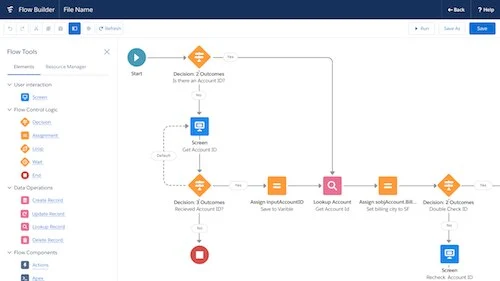Salesforce MuleSoft emerges as a game-changer, offering a powerful integration platform that connects disparate systems, enabling smooth data exchange and streamlined workflows. In this article, we’ll delve into the world of Salesforce MuleSoft, exploring its features, advantages, and how it can elevate your integration efforts.
Uniting Systems with Salesforce MuleSoft
Salesforce MuleSoft is a leading integration solution designed to connect applications, data, and devices across on-premises and cloud environments. By enabling seamless communication between various systems, MuleSoft empowers businesses to accelerate digital transformation and enhance overall operational efficiency.
Key Features of Salesforce MuleSoft
- Anypoint Platform: The core of MuleSoft’s offering, the Anypoint Platform, provides a unified integration experience. It includes tools for designing, building, and managing integrations, APIs, and data flows.
- API-Led Connectivity: MuleSoft follows an API-led approach, which involves creating reusable APIs that connect various systems. This approach simplifies integration, reduces development time, and enhances flexibility.
- Connectivity Templates: MuleSoft offers pre-built integration templates for common use cases, speeding up the integration process and ensuring best practices are followed.
- Data Transformation: The platform enables data transformation and mapping between different formats, ensuring data compatibility across systems.
- Real-Time Monitoring: MuleSoft provides real-time monitoring and analytics, allowing businesses to track the performance of integrations and quickly address any issues.
- Security and Governance: With built-in security features and governance controls, MuleSoft ensures that data remains secure throughout the integration process.
Advantages of Salesforce MuleSoft Integration
- Enhanced Efficiency: By automating data exchange between applications, MuleSoft reduces manual effort and enhances overall process efficiency.
- Faster Time-to-Market: The platform’s pre-built connectors and templates accelerate development, enabling businesses to bring new products and services to market faster.
- Improved Customer Experience: Seamless integration leads to a cohesive customer experience across various touchpoints, fostering loyalty and satisfaction.
- Scalability: MuleSoft’s scalable architecture allows businesses to handle increased data volumes and adapt to evolving needs.
Implementing Salesforce MuleSoft: A Step-by-Step Guide
Implementing Salesforce MuleSoft requires careful planning and execution. Here’s a step-by-step guide to help you get started:
Step 1: Needs Assessment
Identify your integration requirements and objectives. Determine which systems need to be connected and the data that needs to be exchanged.
Step 2: Design Integration Flows
Create integration flows using the Anypoint Platform. Design APIs, data mappings, and transformations based on your business needs.
Step 3: Build and Test
Use MuleSoft’s tools to build integrations and APIs. Thoroughly test the integrations to ensure they work as intended.
Step 4: Deployment
Deploy the integrations to your production environment. Monitor their performance and address any issues that arise.
Step 5: Continuous Improvement
Continuously monitor the integrations’ performance and gather feedback. Use insights to optimize and enhance integration flows.
FAQs about Salesforce MuleSoft
- Can MuleSoft integrate with both cloud and on-premises systems? Yes, MuleSoft is designed to seamlessly connect applications and systems regardless of whether they are in the cloud or on-premises.
- How does API-led connectivity simplify integration? API-led connectivity breaks down integration into manageable components, making it easier to create, reuse, and manage APIs for different systems.
- What role does MuleSoft play in digital transformation? MuleSoft accelerates digital transformation by enabling rapid integration between systems, fostering agility, and enhancing customer experiences.
- Is MuleSoft suitable for businesses of all sizes? Absolutely. MuleSoft offers solutions that cater to the needs of businesses of all sizes, from startups to large enterprises.
- Can MuleSoft handle complex data transformations? Yes, MuleSoft’s data transformation capabilities allow businesses to map, transform, and manipulate data to ensure compatibility between systems.
- Does MuleSoft provide security measures for integrated data? Yes, MuleSoft includes built-in security features to ensure that data remains protected during integration processes.
In a world where business success depends on efficient data exchange and seamless connectivity, Salesforce MuleSoft emerges as a powerful solution. By embracing MuleSoft’s capabilities, businesses can streamline their operations, enhance customer experiences, and stay ahead in the competitive landscape.




